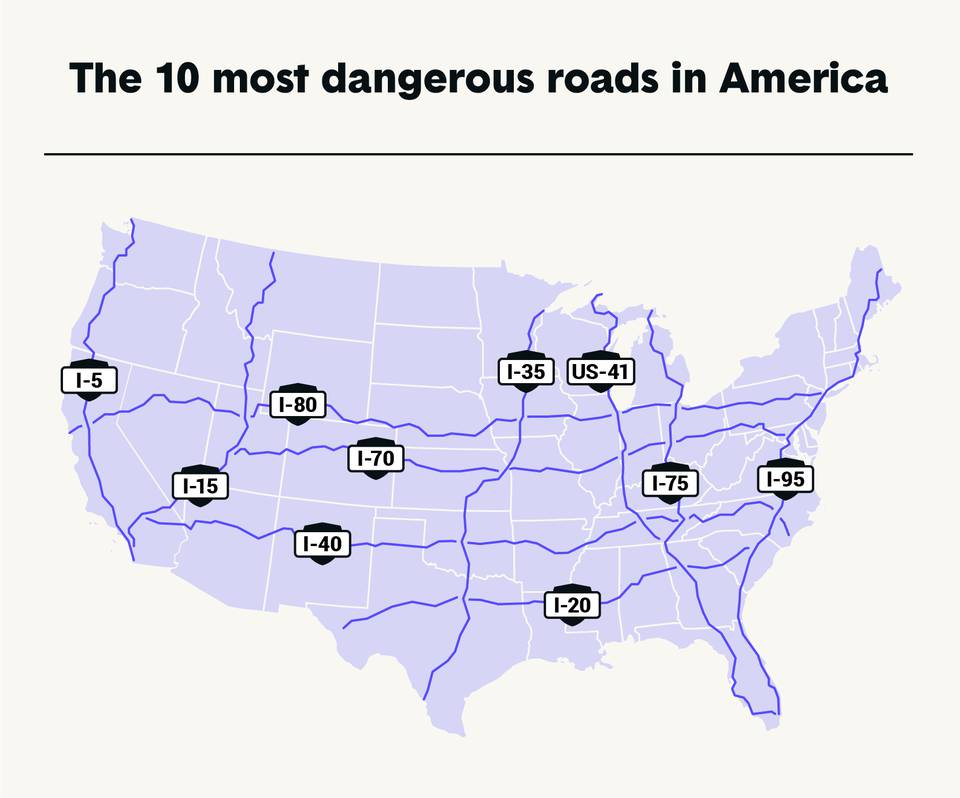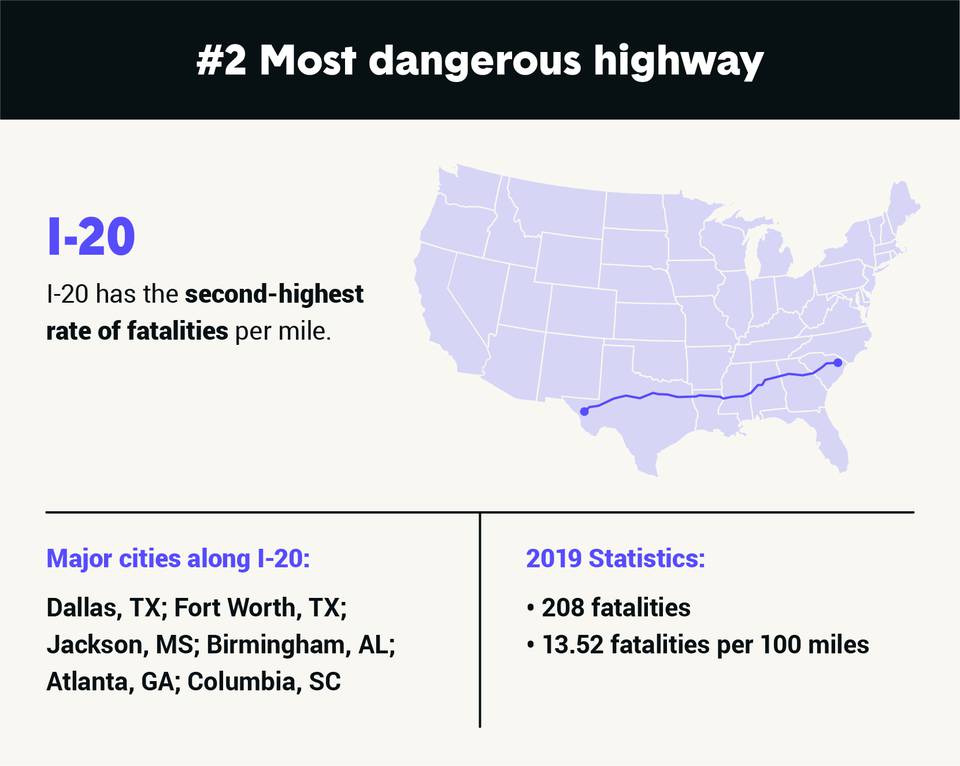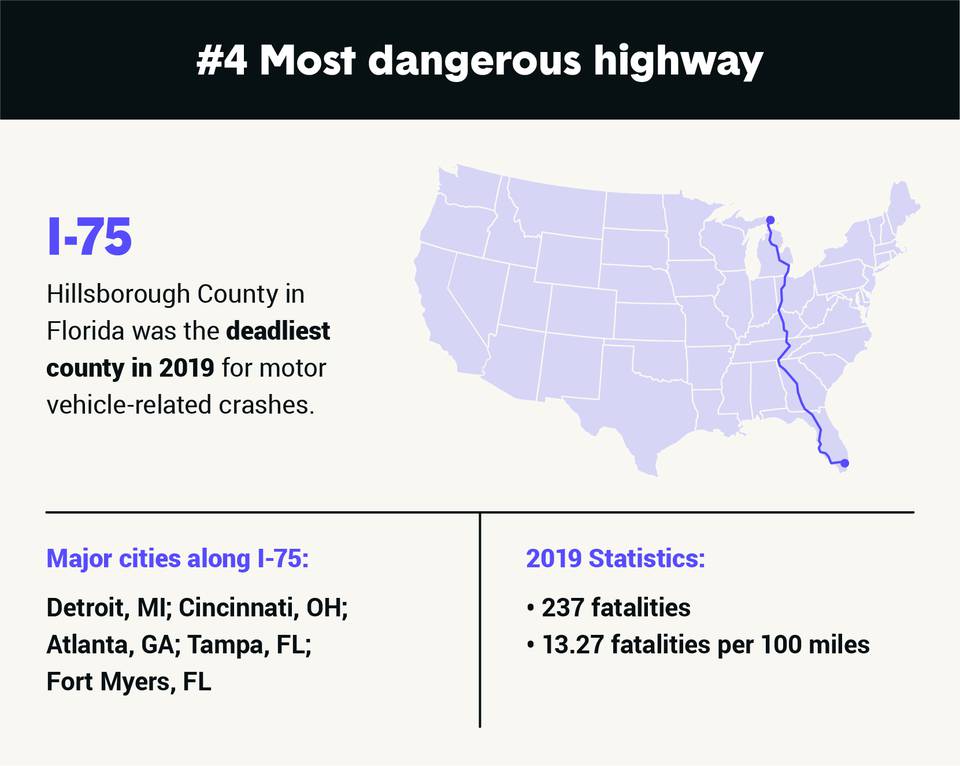According to the National Highway Traffic Safety Administration (NHTSA), in 2020 the U.S. had its highest fatality rate since 2007 — reaching 1.37 fatalities per 100 million vehicle miles traveled.
Anytime you get behind the wheel of a vehicle, there’s a chance you might get into a wreck. That said, the likelihood of being in a motor vehicle collision dramatically varies depending on which road you’re driving on.
We analyzed the most recent Fatality Analysis Reporting System data to assess which roads, counties and states have the most risk for drivers based on the number of fatalities in motor vehicle collisions. You can see a summary of our results in the infographic below.
Key findings include:
- The most dangerous highway in the U.S. is Interstate 95 (I-95).
- Vehicle fatalities increased by an estimated 7.2% from 2019 to 2020.
- Wyoming, New Mexico and South Carolina had the most vehicular crashes per 100,000 people.
- Hillsborough County in Florida, which houses the city of Tampa, had the highest number of fatalities in the nation, 15 per 100,000 people.
Whether it’s your daily commute or you're planning a cross-country road trip, be aware of these 10 most dangerous roads in the U.S. along with sections of the country that have a high motor vehicle fatality rate. Also, protect yourself and your vehicle with the right auto insurance coverage in case you do find yourself in a car accident.










